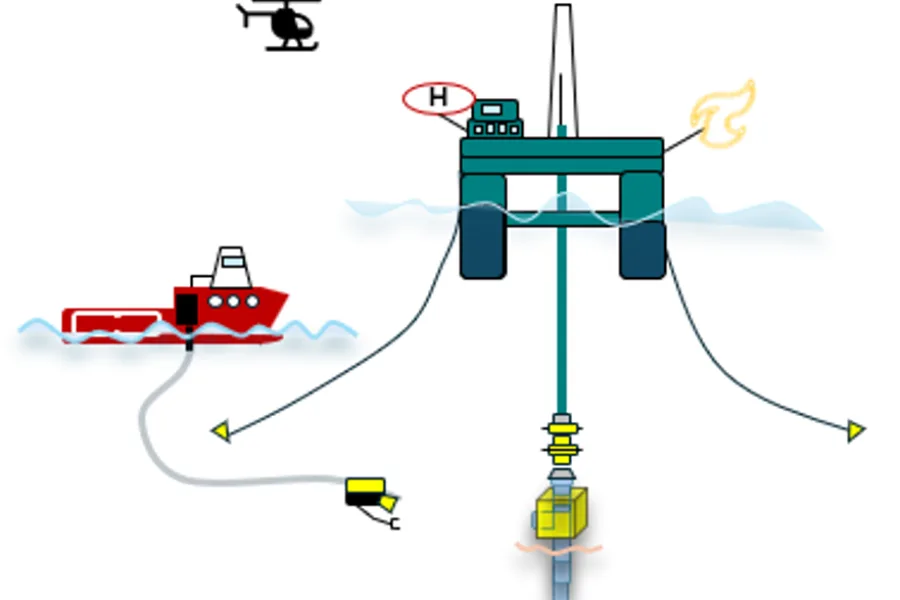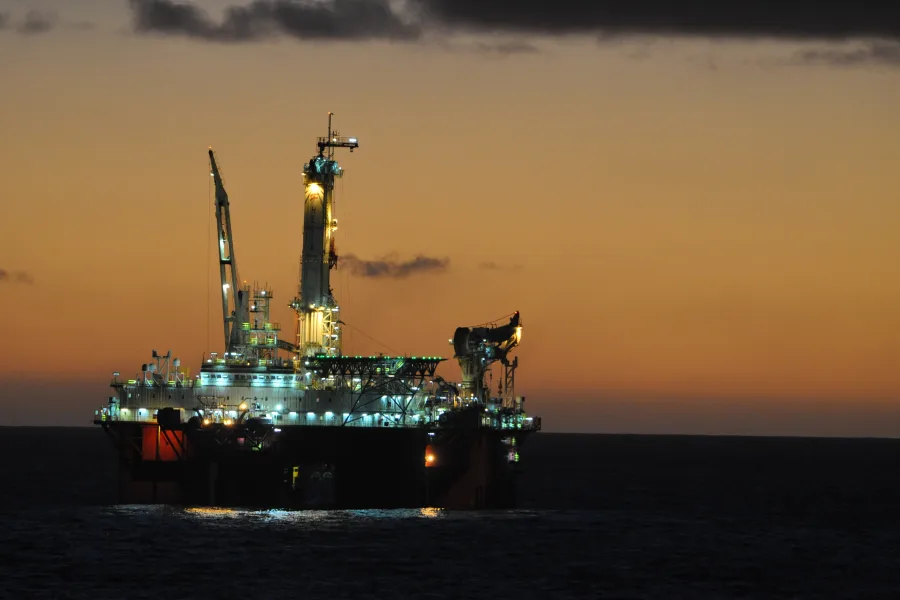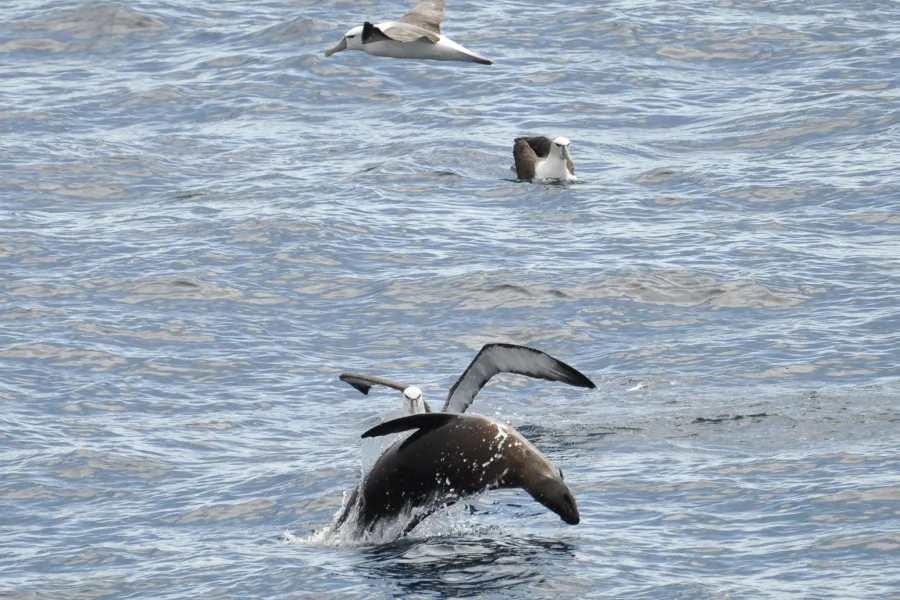East Coast Supply Project - Annie-2 Development Well Environment Plan
To help meet east coast domestic demand, subsea gas reserves need to be developed to replace existing wells as they run out. Imported alternatives cost significantly more and cause much higher emissions. The East Coast Supply Project (ECSP) - Annie-2 development well Environment Plan provides for the drilling of a single development well named Annie-2. Annie-2 will be tied into our existing subsea pipeline to allow hydrocarbons to be transported to our Athena Gas plant.
Update log
- March 2025: Page created
Location
Adjacent to Athena gas plant, Otway Basin, 9km offshore Peterborough and Port Campbell, Victoria in Commonwealth waters.
Offshore Eastern Maar Sea Country.
Call for comments
We are preparing the ECSP - Annie-2 Development Well Environment Plan. If you think your functions, interests or activities may be affected, we would like to hear from you.
Community sessions
| Drop in Sessions and Webinars | Dates and Times |
Drop-in sessions No bookings required | 10:00am to 12:00pm 1:00pm to 3:30pm 5:00pm to 7:00pm |
Portland – Quest Portland 66 Julia St, Portland 305 | Wednesday 4 June 2025 |
Warrnambool- Surf Life Saving Club 76 Pertobe Rd, Warrnambool VIC 3280 | Thursday 5 June 2025 |
Peterborough Golf Club 20 Schomberg Rd, Peterborough VIC 3270 | Friday 6 June 2025 |
| Click here for our online webinar. | |
| Register by 4:00pm EST Friday 23 May 2025 | Tuesday 27 May 2025 5:00pm EST |
| Register by 4:00pm EST Monday 26 May 2025 | Thursday 29 May 2025 5:00pm EST |
| Register by 4:00pm EST Friday 6 June 2025 | Monday 9 June 2025 5:00pm EST Tuesday 10 June 2025 5:00pm EST |
Activity details
We plan to:
- Drill the Annie-2 development well
- Well clean up and flowback
- "Complete" the well for production
- Suspend/shut in the well for future connection to our existing pipeline
- Survey the seabed with a support vessel
- Carry out inspection, maintenance and repair with with a support vessel using tools that include:
- remotely operated vehicles (ROV)
- side scan sonar
- multi-beam echosounder
- magnetometer.
Distance from shore
Approximately 9 km
Permit area
Vic P44
Water depth
Approximately 55 m
Supply base
Portland
Summary of Impacts, Risks and Activities
Information Sheet regarding impacts, risks and control measures.
Timeline
7 days per survey, ~60 days for well construction. Activities are planned to be carried out sometime during the period 2026 to 2028 inclusive.
Identified impacts and risks
By interest group
If you have concerns about how these may affect your functions, interests or activities, please contact us.
Find out about risks and impacts that may affect you.
Interaction with other marine users
- Mobile Offshore Drilling Unit (MODU or drill rig) and support vessel operations: Presence will be temporary with vessels mobilised from Portland or Geelong/Melbourne area
- Permanent presence of one well likely encompassed by a 500m PSZ. The final well locations may vary by up to 500m to accommodate seabed features and engineering constraints identified at the survey stage.
Impacts
- Changes to the functions, interests and activities of other marine users
Controls
- Temporary Exclusion Zones will be communicated via Notice to Mariners
- Fisheries damages protocol
- Ongoing consultation and notification
- Marine assurance process
Seabed disturbance
Our proposed activities offshore include:
- putting down anchors and grounded chains temporarily to position our mobile offshore drilling unit
- pre-laying anchors using our support vessel
- 'flying' our ROV (remotely operated vehicle) close to seabed
- depositing cuttings such as rock and natural material generated during drilling of the wells
- depositing excess cement on seabed
Impact
- Change in benthic habitat
Risks
- Marine fauna injury or mortality
- Cultural heritage changes.
Controls
To mitigate or reduce these impacts and risks we will implement the following controls:
- Planned maintenance system
- Offshore work procedures
- Marine assurance process
- Underwater cultural heritage disturbance risk management process
Underwater sound
Underwater sound will be generated from the following activities:
- MODU operation: Continuous sound through general operations and utilisation of thrusters when and as required for moving and holding position. Indicative MODU is shown below 1.
- Support vessel operation: Continuous sound through propeller and thrusters when moving and holding position. Indicative support vessel is shown below.
- ROV operations
- Drilling operations: Equipment vibrations and the rotating drill string will produce noise at each well location.
Impact
- Change in ambient sound
Risks
- Behavioural change in marine fauna (marine mammals, marine turtles, fish)
- Auditory impairment (marine fauna)
Controls
- Victoria Whale Disturbance Risk Management Procedure to ensure our activities are not inconsistent with relevant EPBC species recovery plans
- Marine Assurance Process
- Offshore Operational Procedures
Greenhouse gas emissions
Greenhouse Gas (GHG) emissions are generated by the following activities:
- Well clean-up and flowback: Direct emissions are generated when the well is flowed to remove contaminants with gas sometimes returned to the MODU. This gas is flared for safety purposes which is estimated to take approximately 1 day.
- MODU and support vessel operations: The MODU and support vessel generate direct emissions by their use of diesel or gas to generate power for operation. Indirect emissions are generated through the purchase of products such as cement and the waste generated.
Impacts
- Increase in greenhouse gas emissions
- Change in climate systems
- Change in ecosystems
- Change in Socio-economic factors
Controls
- Marine assurance process
- Cooper energy emissions reduction protocol


Light emissions
Our proposed activities offshore that may result in light emissions include:
- Vessel operations
Impact
- Change in ambient light
Risks
- Change in fauna behaviour
Controls
To mitigate or reduce the impacts and risks of our activities we will:
- Conduct a pre-campaign risk review for light
- Implement Marine Assurance Process (e.g. comply with Marine Order 30)
- Implement Light Management Measures (e.g. Vessel non-essential light positioning)
Other atmospheric emissions
Our proposed activities offshore that may result in Atmospheric Emissions include:
- Vessel and MODU operations
- Helicopter operations
Impact
- change in air quality
Controls
To mitigate or reduce the impacts and risks of our activities we will:
- Implement a Marine Assurance Process for vessels
Planned discharges
Our proposed activities offshore that may result in planned discharges include:
- Vessel operations
- Installation of subsea structures
- Maintenance and repair
Impact
- change in water quality and change in sediment quality.
Risks
- injury / mortality to marine fauna.
Controls
To mitigate or reduce the impacts and risks of our activities we will:
- Implement a Marine Assurance Process
- Implement an Offshore Chemical Assessment Procedure
- Ensure the vessels meet emissions and discharge standards prior to commencing an offshore activity
- Undertake a campaign risk review
Invasive marine species
Activities
- Ballast water adjustments by MODU and / or support vessels to maintain stability.
- Biofouling by MODU and / or support vessel through IMS presence on submerged surfaces
Risks
- IMS transferred into field, establishes and spreads.
- IMS is transferred between vessels, establishes and spreads to other areas.
- IMS is transferred out of the field and establishes outside the region and spreads.
Controls
- IMS Risk Management Protocol
- Australian Biofouling Management Requirements
Unplanned interactions with marine fauna
Our proposed activities offshore that may result in unplanned interactions with marine fauna include:
- Vessel and MODU operations
Risks
- Injury / mortality to marine fauna.
Controls
To mitigate or reduce the impacts and risks of our activities we will:
- Implement Offshore Operational Procedures (e.g. distances and management practices for interacting with cetaceans)
- Implement Offshore Victoria Whale Disturbance Risk Management Procedure to ensure our activities are not inconsistent with relevant EPBC species recovery plans
Accidental or uncontrolled hydrocarbon release
Our proposed activities offshore that may result in accidental hydrocarbon release include:
- Vessel operations
- MODU (drilling) operations
Impact
- Change in water quality
Risks
- Change in habitat
- Change in fauna behaviour
- Injury / Mortality to Fauna
- Changes to the Functions, Interests, or Activities of Other Users
Controls
To mitigate or reduce the impacts and risks of our activities we will:
- Implement a Marine Assurance Process (e.g. compliance with Marine Orders)
- Implement Marine Exclusion and Caution Zones
- Undertake ongoing engagement
- Maintain an Operational and Scientific Monitoring Program
- Have an accepted Oil Pollution Emergency Plan for the activity
- Have regulatory Safety Management Plans in place
- Operate in accordance with a NOPSEMA accepted Well Operations Management Plan (WOMP) and Safety Case.
Loss of Materials or Waste Overboard
Our proposed activities offshore that may result in Loss of Materials or Waste Overboard include:
- MODU (drilling) operations
- Vessel operations
- ROV operations
Risks
- Change in Habitat
- Injury / Mortality to Marine Fauna
- Change to Cultural Heritage
Controls
To mitigate or reduce the impacts and risks of our activities we will:
- Implement a Marine Assurance Process
- Implement Offshore Operational Procedures
- Ensure Vessels meet Emissions and Discharge standards
Have your say
We want to hear from relevant persons. Please use the contact form below to get in touch, and feel free to share this website link with any other relevant persons that you are aware of.
If you contact us via our webform:
We will consider any relevant matters raised during the development of our EP and respond to you.

What next
We will submit our draft environment plan to the National Offshore Petroleum Safety and Environmental Management Authority (NOPSEMA) for assessment. If you have consulted with us as a relevant person, your input will be considered in improving our EP. Your name will be included in the "sensitive information" part of our plan and not published.
News
Introducing Amplitude Energy
With our new company name we launch a new identity and revised vision for our role in Australia’s energy transition. Domestic gas explorer, producer, employer, innovator.
Summary of Impacts, Risks and Activities
Information Sheet regarding impacts, risks and control measures.